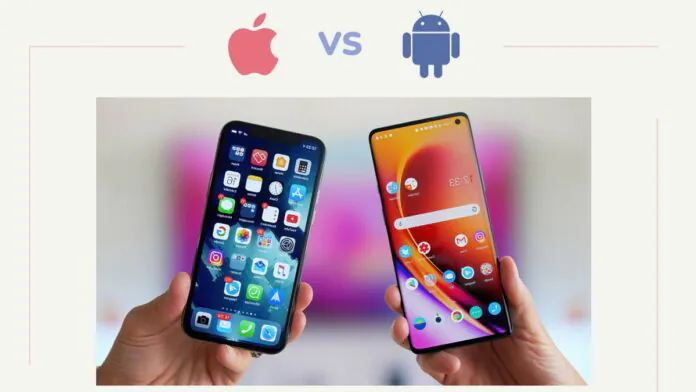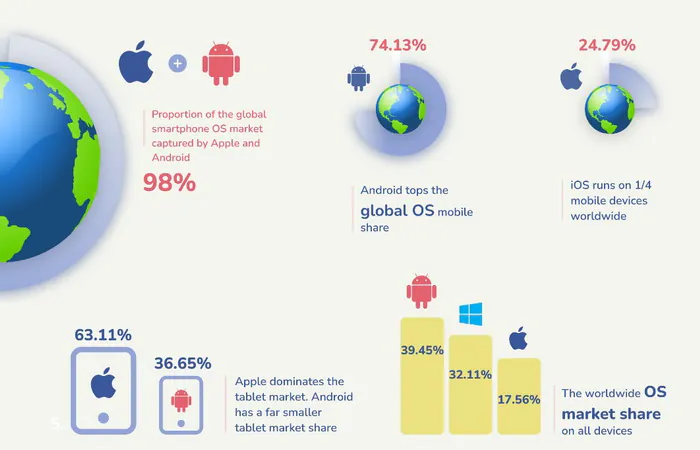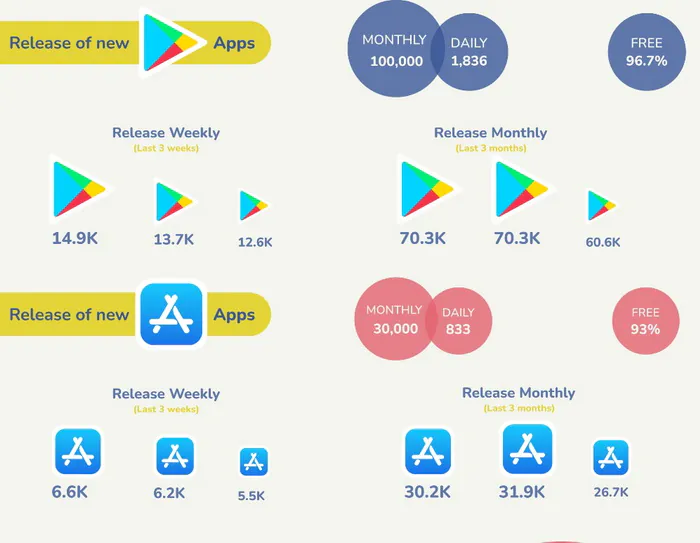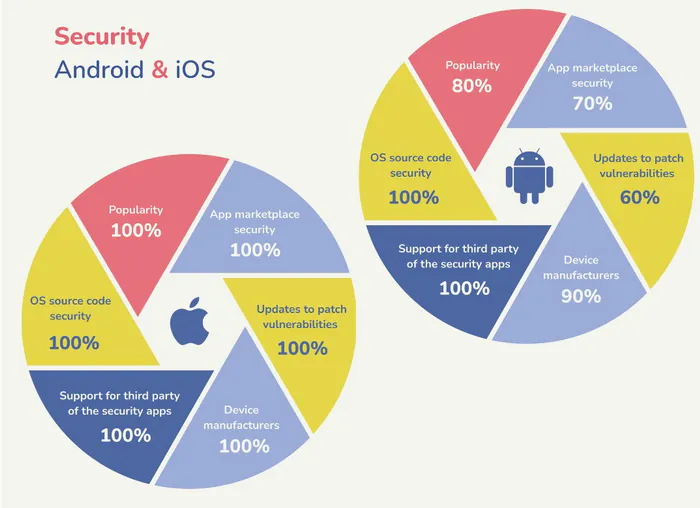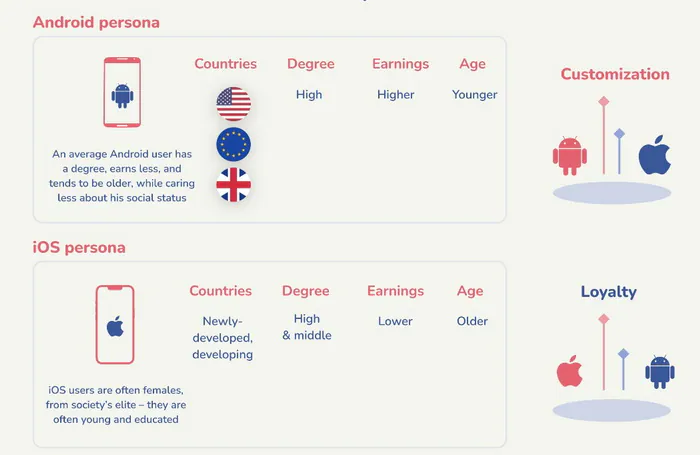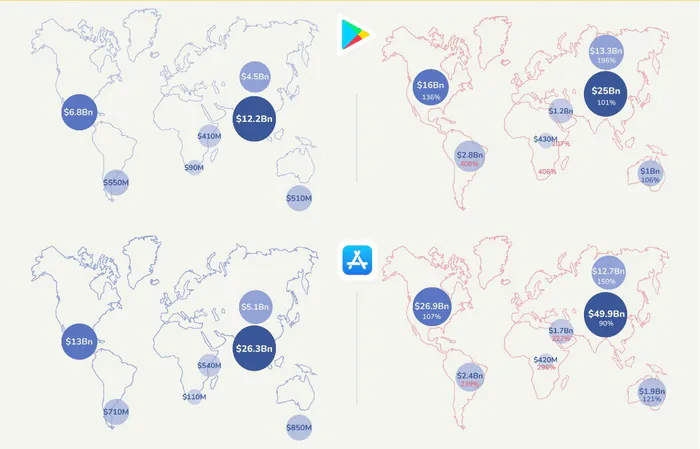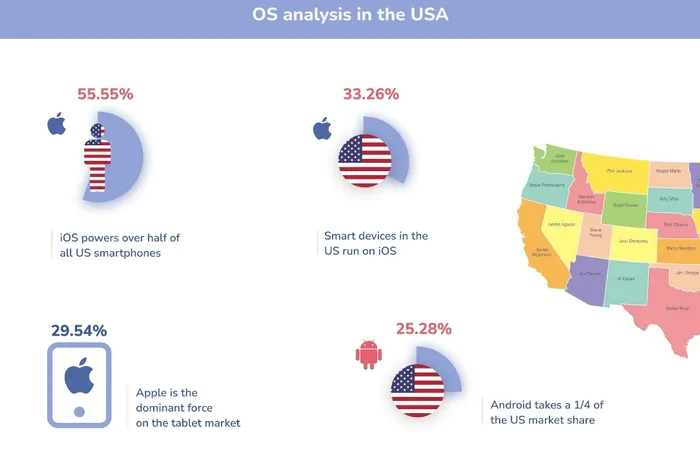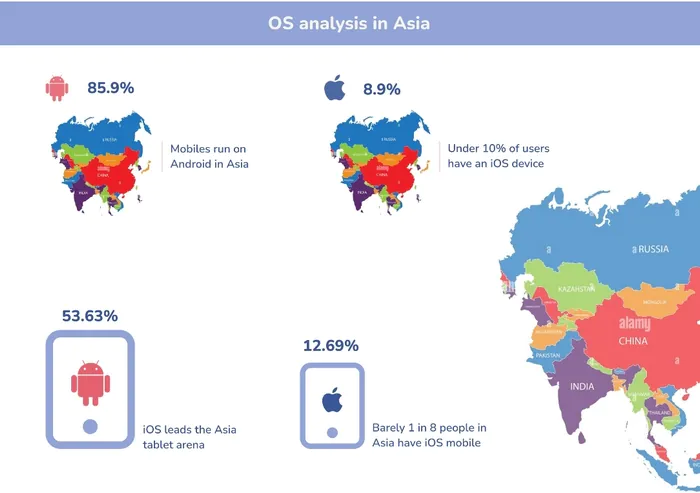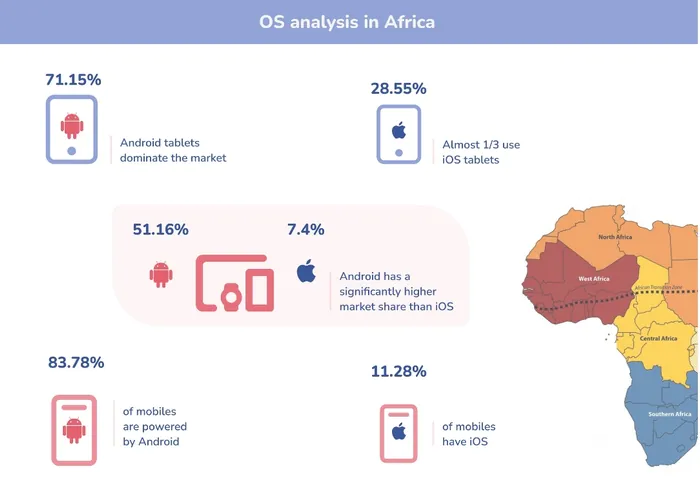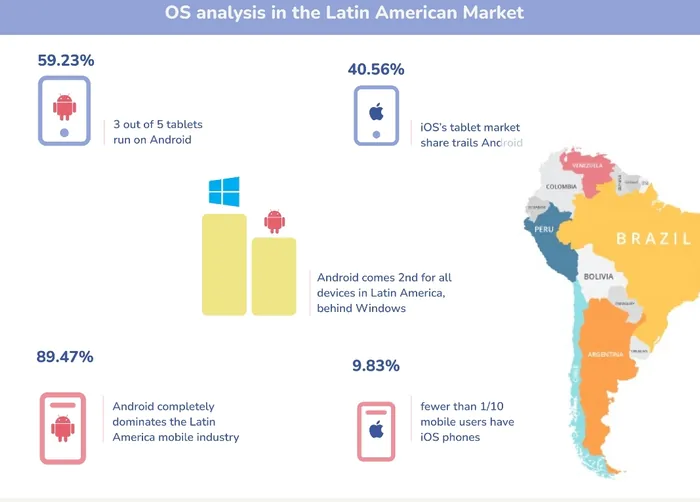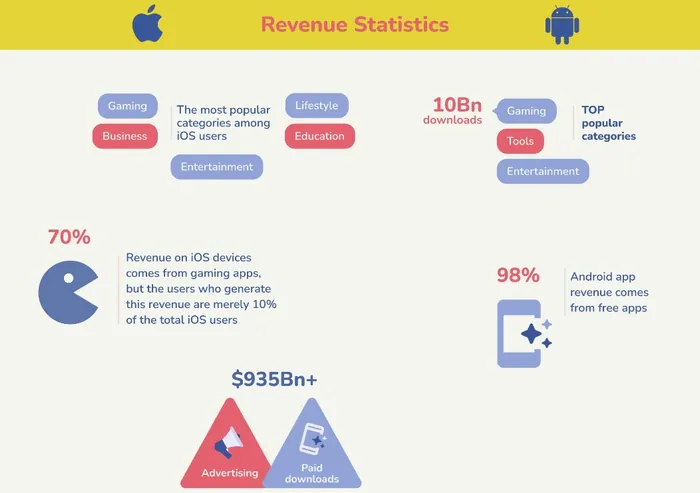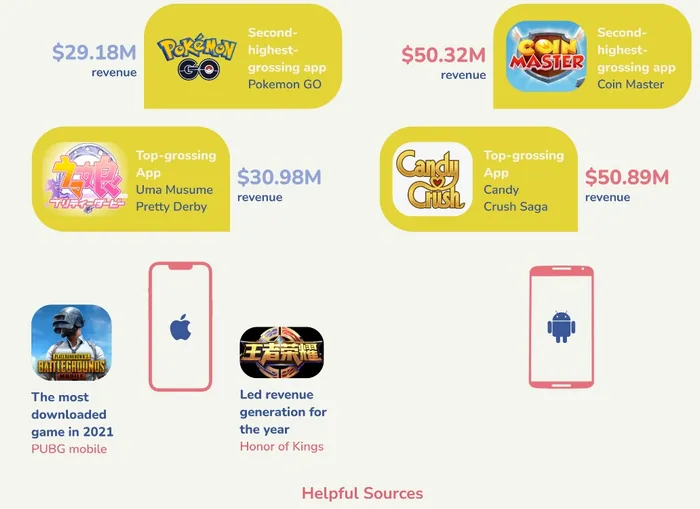© ROOT-NATION.com - Use of content is permitted with a backlink.
The number of smartphone users worldwide has reached a staggering 6.7 billion! That’s pretty steep growth considering there were less than 2 billion active smartphone users at the end of 2016. Currently, 98% of smartphones run two operating systems, and you probably already guessed that they are Android and iOS.
Reasons for Android and iOS success
One obvious reason is that Google owns Android and Apple owns iOS, both trillion-dollar companies with incredible resources. But their success, of course, lies not only in wealth. Both iOS and Android are always one step ahead of competition in technical advancements and provide users with the latest features. Likewise, both operating systems are regularly updated and modernized to ensure smooth operation for users. They simply make their users fall in love with their UX and features. Therefore, there were no noteworthy competitors against the two OS giants.
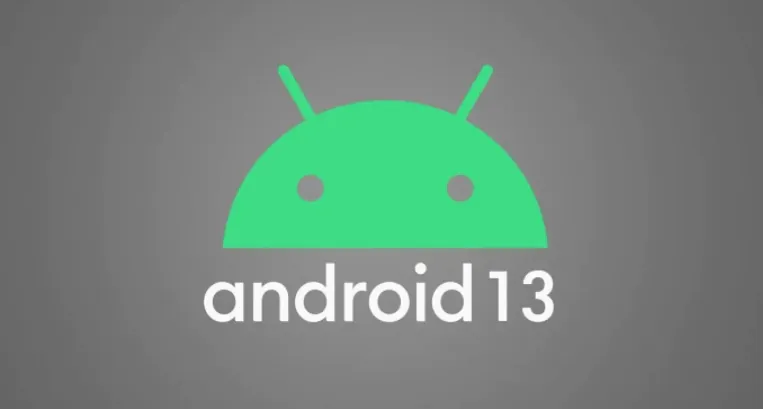
The dominance of both Android and iOS is easy to understand. Many players have tried to be the third top mobile OS, and failed. But what about a direct comparison of the two? How do they compete with each other in the market today? Here are some interesting Android and iOS market share numbers presented by Downloadastro to give you some idea of how the two operating systems are doing in the global market.
- Android is the largest operating system in the world with a market share of over 70%. iOS is in second place with almost 25% of the market
- Android continues to grow in both developing and developed markets outside of China
The iOS market is experiencing promising growth in niche markets such as the United States, Japan, and the United Kingdom - Older versions of Android OS are more popular among Android users. iOS users prefer the latest versions.
- Google Play Store and iOS App Store earned almost $34 billion in the last quarter of 2021.
Android is the largest OS in the world
Android is the world’s largest mobile operating system, and there are plenty of data sources to prove it. iOS is in second place, but the difference in market share is noticeably large. According to stats, the market share of Android and iOS is 72.2% and 26.99%, respectively.
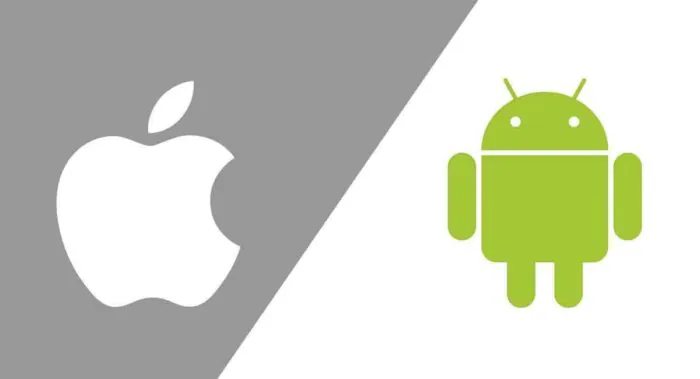
Both iOS and Android were released around the same time. Apple captured most of the initial market, and Android’s share in 2009 was only 10%. But over time, Android has become the largest mobile OS in the world. But that doesn’t mean that iOS is somehow lagging behind. iOS maintains a significant global presence and, despite having a smaller market share compared to Android, has a larger revenue stream than Android.
In China, Android still has the largest mobile OS market share. The current market share of iOS and Android in China, as of February 2022, is 79% for Android and 20% for iOS. But according to Statista, in July 2021, Android’s market share was 81%. This change in just six months gives a clear picture of the sharp decline of Android in China in a short period.

China is the largest mobile phone market, and Android as the largest OS, aiming to win there. But we know that when it comes to the Chinese market, there is always political and business rivalry.
The Chinese government does not get along very well with Google. That’s why they limited Google’s access to Chinese markets in different ways. This has led to a decline in Android’s market share, leaving Chinese mobile users with alternative options such as Xiaomi, Huawei, OPPO and other local brands.
iOS is the people’s choice in developed markets
If you’re reading this article in the US, Japan, and the UK, the global Android statistics might come as a big surprise to you. Because statistically, you and your friends are more likely to own an iPhone.

The market share of mobile OS leaders in the US is 59.17% for iOS and 40.54% for Android. In Japan, the iOS market share is almost 63%. Likewise, in the UK, iOS outstrips Android by a wide margin. The main reason iOS is the first choice of consumers in developed markets is their purchasing power.
Older versions of Android OS are still popular among most users
The popularity of old OS versions sounds strange because we want to have the latest OS version on our phones. While this is true for iOS, Android user statistics tell us otherwise. In a study published in February 2022 by Statista, Android versions released in 2015 were the most popular versions among Android users. 60% of Android users keep older versions of Android on their phones.
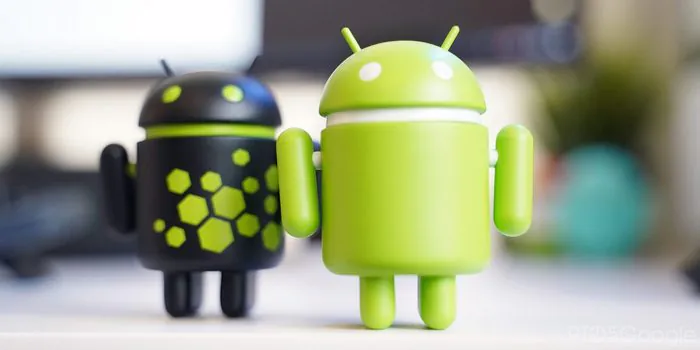
It’s not that the latest version of Android has problems. It’s just that there are tons of Android phone manufacturers out there, and keeping up with the latest version becomes quite a challenge when managing different models, makes, and manufacturers. iOS users, on the other hand, rely on a sole manufacturer of iOS devices. Thus, more than 80% of iOS users have the latest version of iOS on their phones.
$34 billion in revenue from apps in Q3, 2021
In Q3, 2021, people spent nearly $34 billion on premium apps, in-app purchases, and first-time app installs on both leading mobile operating systems. Even though iOS’s market share is 50% smaller than Android’s, iOS’s revenue was $21.5 billion, almost double that of Android’s $12.1 billion.
iOS has a significant advantage in developed markets, which in turn allows it to generate higher revenues because users in developed markets are more likely to spend more on apps.
So, when it comes to global mobile OS market share, there is no third player in the market apart from Android and iOS. From the current statistics we see here, it’s clear as day that Android’s policy is to maximize market penetration and attract the maximum number of users. While iOS tends to maintain a revenue-driven presence in developed markets. Android wins the market share game between iOS and Android, but iOS has caught up with a much better revenue stream.
You can also help Ukraine fight with Russian occupants via Savelife or via an official page of the National Bank of Ukraine.
- Google has shut down Android Auto smartphone app
- A list of all iPadOS 16 compatible iPad models has been released


